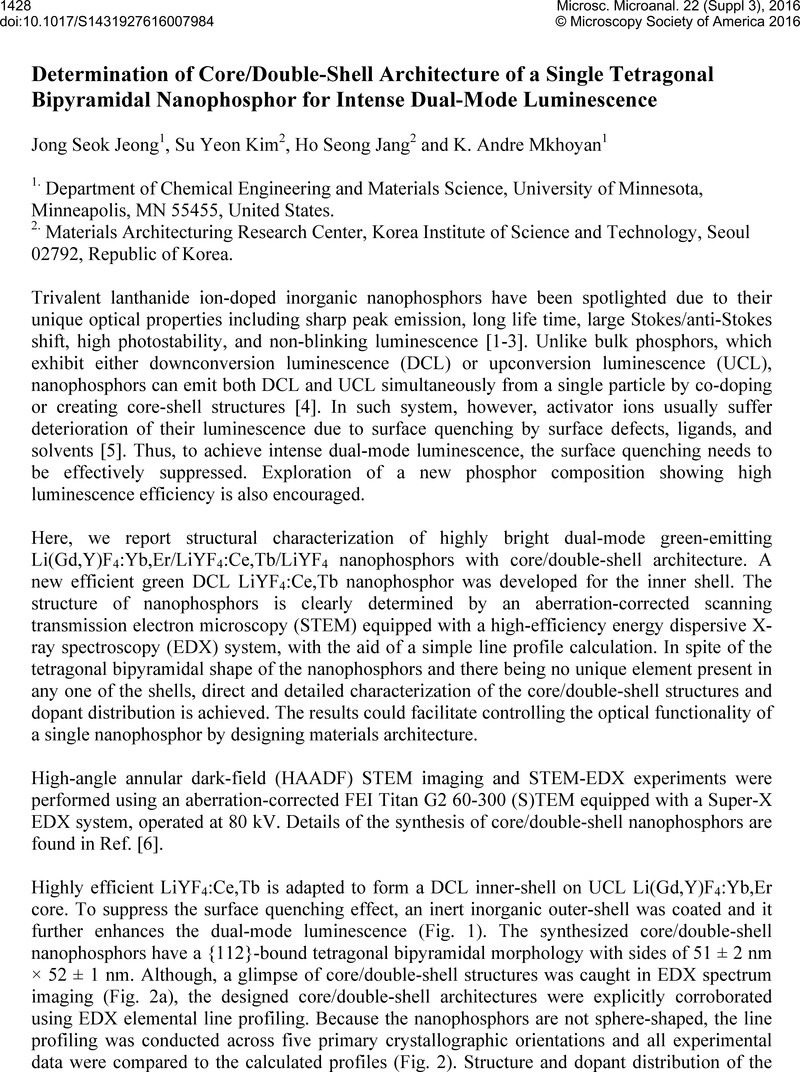No CrossRef data available.
Article contents
Determination of Core/Double-Shell Architecture of a Single Tetragonal Bipyramidal Nanophosphor for Intense Dual-Mode Luminescence
Published online by Cambridge University Press: 25 July 2016
Abstract
An abstract is not available for this content so a preview has been provided. As you have access to this content, a full PDF is available via the ‘Save PDF’ action button.

- Type
- Abstract
- Information
- Microscopy and Microanalysis , Volume 22 , Supplement S3: Proceedings of Microscopy & Microanalysis 2016 , July 2016 , pp. 1428 - 1429
- Copyright
- © Microscopy Society of America 2016
References
References:
[7] This work was supported by the MRSEC Program of the NSF under Award No. DMR-1420013, the Future Key Technology Program (2E25371) by the Korea Institute of Science and Technology, the Pioneer Research Center Program through the National Research Foundation of Korea funded by the Ministry of Science, and ICT & Future Planning (NRF-2013M3C1A3065040). Parts of this work were carried out in the Characterization Facility, University of Minnesota, which receives equipment funding through the UMN NSF MRSEC.Google Scholar




